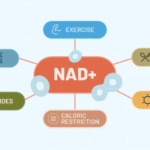1. Introduction to ECG
An electrocardiogram (ECG) is a vital diagnostic tool used to assess the electrical activity of the heart. It consists of various waves and segments that reflect different phases of the cardiac cycle.
2. Ventricular Repolarization
Ventricular repolarization refers to the phase of the cardiac cycle during which the ventricles relax and reset their electrical charge after depolarization. This process prepares the heart for the next contraction.
3. T Wave
The T wave on an ECG represents ventricular repolarization. It occurs following the QRS complex, which signifies ventricular depolarization, and indicates the resetting of electrical activity in the ventricles.
4. Duration of Ventricular Repolarization
The duration of the T wave reflects the time it takes for complete ventricular repolarization to occur. Changes in the T wave duration or morphology may indicate underlying cardiac abnormalities.
5. Importance of Identifying Ventricular Repolarization
Recognizing ventricular repolarization on an ECG is essential for assessing cardiac function and diagnosing conditions such as myocardial ischemia, electrolyte imbalances, and arrhythmias.
6. Relationship Between Depolarization and Repolarization
Depolarization, represented by the QRS complex, precedes repolarization in the cardiac cycle. Understanding this sequential process helps interpret ECG findings accurately.
7. Electrolyte Imbalances
Electrolyte imbalances, particularly elevated potassium levels (hyperkalemia) or decreased calcium levels, can affect ventricular repolarization, leading to abnormal T wave morphology or duration.
8. Ischemic Changes
In myocardial ischemia, inadequate blood flow to the heart muscle can disrupt ventricular repolarization, resulting in T wave abnormalities such as flattening, inversion, or asymmetry.
9. Arrhythmias
Certain arrhythmias, such as ventricular tachycardia or ventricular fibrillation, can cause irregularities in ventricular repolarization, manifesting as changes in the T wave pattern on an ECG.
10. Drug Effects
Some medications, including antiarrhythmics, psychotropic drugs, and certain antibiotics, can influence ventricular repolarization and alter T wave morphology on an ECG.
11. Physiological Variations
Physiological variations in ventricular repolarization, such as those observed in athletes or during periods of emotional stress, may result in subtle changes in the T wave pattern that are considered normal variants.
12. Clinical Assessment
Interpreting ventricular repolarization requires clinical judgment and correlation with patient history, symptoms, and additional diagnostic tests to determine the underlying cause of any observed abnormalities.
13. Diagnostic Challenges
Identifying ventricular repolarization abnormalities can be challenging, particularly in the presence of confounding factors such as bundle branch blocks, preexisting conduction abnormalities, or artifact.
14. Monitoring Changes Over Time
Serial ECG monitoring allows healthcare providers to track changes in ventricular repolarization patterns over time, providing valuable insights into the progression of cardiac conditions and treatment efficacy.
15. ECG Interpretation Skills
Developing proficiency in ECG interpretation, including recognizing ventricular repolarization patterns, is essential for healthcare professionals involved in the assessment and management of cardiac patients.
16. Continuing Education
Continuing education programs and regular ECG training sessions help healthcare providers refine their ECG interpretation skills and stay updated on advancements in cardiac diagnostics and treatment.
17. Multidisciplinary Collaboration
Effective management of cardiac conditions requires collaboration among healthcare professionals, including cardiologists, electrophysiologists, nurses, and allied health professionals, to ensure comprehensive care for patients.
18. Patient Education
Educating patients about the importance of ECG monitoring and the significance of ventricular repolarization abnormalities empowers them to actively participate in their cardiac care and adhere to recommended treatment plans.
19. Research and Innovation
Ongoing research in cardiac electrophysiology and ECG technology drives innovation in diagnostic techniques and therapeutic interventions, ultimately improving patient outcomes in the management of ventricular repolarization abnormalities.
20. Quality Improvement Initiatives
Healthcare organizations implement quality improvement initiatives to standardize ECG protocols, enhance interrater reliability in interpretation, and promote adherence to evidence-based guidelines for the assessment of ventricular repolarization.
21. Public Awareness
Raising public awareness about the importance of regular cardiac screenings and early detection of ventricular repolarization abnormalities encourages individuals to prioritize heart health and seek timely medical evaluation when necessary.
22. Advocacy Efforts
Advocacy efforts aimed at policymakers and healthcare stakeholders advocate for increased access to cardiac diagnostic services, equitable distribution of resources, and improved outcomes for patients with ventricular repolarization abnormalities.
23. Global Health Impact
The global burden of cardiac conditions underscores the importance of addressing ventricular repolarization abnormalities on a global scale, with initiatives focused on prevention, early detection, and treatment.
24. Community Engagement
Engaging with local communities through outreach programs, health fairs, and educational workshops raises awareness about cardiac health and empowers individuals to take proactive steps in preventing and managing ventricular repolarization abnormalities.
25. Conclusion
Understanding ventricular repolarization and its representation on an ECG is essential for healthcare providers involved in the assessment and management of cardiac conditions. By recognizing the significance of ventricular repolarization abnormalities, healthcare teams can provide timely interventions and optimize outcomes for patients with cardiac disorders.














